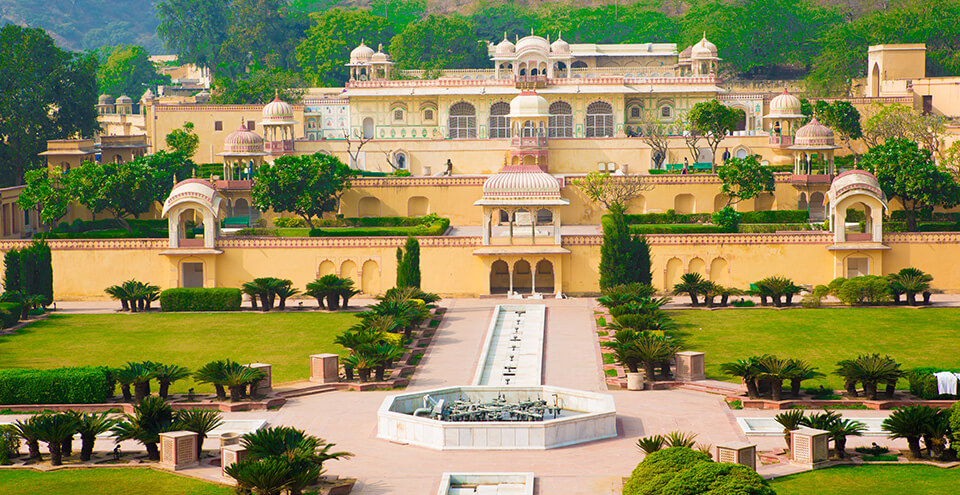THE PINK CITY
Jaipur Tour
Udaipur Taxi provides jaipur tour packages at very nominal charges. Jaipur city was planned by Vidyadhar Bhattacharya, Jaipur has got the distinction of being the first planned urban center of India. Renowned globally for its colored gems, the capital city of Rajasthan combines the allure of its ancient history with all the advantages of a city. The bustling modern city is one of the three recessions of the golden triangle that includes Delhi, Agra and Jaipur.
The report goes that in 1876, the Prince of Wales visited India on a turn. Since the color pink was symbolic of hospitality, Maharaja Ram Singh of Jaipur painted the entire city pink. The pink that colors the city prepares for a marvelous spectacle to behold. Jaipur rises up majestically against the background of the forts Nahargarh, Jaigarh and Garh Ganesh Temple.
Jaipur traces back its origins to 1727 when it was built by Jai Singh II, the Raja of Amber.He transferred his capital from Amber to the new city because of the rapidly-growing population and an increasing water scarcity. Noted architect Vidyadhar Bhattacharya used the conventional principles of Vastu Shastra to build the urban center.

Amber Palace
Amber (pronounced Amer) is at a distance of approximately 11 kilometers from Jaipur. Now a UNESCO World Heritage Site, it was the citadel of the Kachwahas of Amber, until the capital was affected to the plains, to what is today Jaipur. The castle, located in craggy hills, is a beautiful melange of Hindu and Mughal styles.

City Palace
Situated deep inside the walled city, the City Palace Complex was conceived and established by Maharaja Sawai Jai Singh II, the founder of Jaipur. A beautiful fusion of Mughal and Rajput architecture, the castle is still home to the last ruling royal family, which dwells in a secret part of the castle.

Jantar Mantar
Now a UNESCO World Heritage Site, Jantar Mantar in Jaipur is regarded to be the biggest of the five astronomical observatories built by Maharaja Sawai Jai Singh II, the founder of Jaipur. It contains sixteen geometric devices, designed to measure time, track celestial bodies and observe the eye sockets of the planets about the sun.

Hawa Mahal
Hawa Mahal, literally the Palace of Winds, was established in 1799 by the poet king Sawai Pratap Singh as a summertime hideaway for him and his household. It also functioned as a space where the ladies of the royal household could watch everyday life without being caught themselves.

Jal Mahal
One of the most wondrous sights in Jaipur is the beautiful Jal Mahal or Lake Palace. The clear, sand colored stone walls and the rich blueness of the water make for a terrific contrast. The castle seems to float in the center of Man Sagar Lake, where its magnificent exteriors can be loved by tourists.

Albert Hall Museum (Central Museum)
The building takes its name from The Victoria and Albert Museum in London, the inspiration for its invention. The exquisitely built Albert Hall is housed in the center of Ram Niwas Garden. Sir Swinton Jacob conceptualized and designed it using styles from the Indo-Sarcenic architecture.

Nahargarh Fort
Nahargarh Fort sits proudly on a ridge of the Aravalli Hills, creating an impressive northern backdrop to the urban center of Jaipur. It was built during the reign of Jai Singh in 1734, and was later enlarged in 1868. Nahargarh, which means abode of tigers, was a formidable barrier, defending Jaipur against attacking enemies.

Jaigarh Fort
Approximately 15 kilometers from Jaipur, Jaigarh Fort was established by Sawai Jai Singh II sometime in the early 18th century amidst the arid, rocky and thorn-scrub covered hills. Despite its ancient construction, it still keeps most of its imposing citadel appearance.

Birla Temple
The Lakshmi-Narayan Temple, or the Birla Temple, as it is more popularly known as, is located at the foot of Moti Dungari. Established on an elevated platform, this comparatively modern temple is made exclusively of white marble and dominates the skyline of south Jaipur.

Gaitore (Memorials Of Kings)
Barely off the Jaipur-Amber road is greater, where the erstwhile Maharajas of Jaipur are entombed. The chhatris (cenotaphs), built of white marble display the distinctive Rajput style of architecture. The open pavilions with ornate domes are supported by delicately sculpted pillars.

Sisodia Rani Palace And Garden
Sisodia Rani Palace and Garden are located 8 kilometers from Jaipur on the Agra road. Set out in the Mughal style, it is painted with the legends of Radha and Krishna.

Vidyadhar Garden
Located near Sisodia Garden, this is yet another beautiful garden which is a must-see for visitors. It is named after Vidyadhar Bhattacharya, the Chief Architect of Jaipur.

Central Park
Central Park is a big green zone right in the center of Jaipur that offers city dwellers a place for a moment of rest. Conceptualized and built by the Jaipur Development Authority, it is Jaipur’s largest park. It houses a lush garden, the Polo Ground and a golf clubhouse.

Anokhi Museum Of Hand Printing
At a simple ten-min walk through the cobblestoned streets of Amber lies the Anokhi Museum of Hand Printing. Settled in a magnificently restored Haveli (mansion), the museum displays a varied selection of block-printed textiles alongside images, instruments and associated targets.

Govind Devji Temple
The Krishna temple is a rare spire-less temple and houses the idol of Govind Devji that Sawai Jai Singh brought from Vrindavan. The god, revered by the erstwhile royal family, is also revered by the locals in the region.

Moti Doongri Ganesh Temple
Moti Doongri is a small hill around which the city of Jaipur flourishes. Moti Doongri means pearl hill, because the hill indeed resembles a pearl bead. Visitors go there to pay homage at the famous Ganesh temple.
